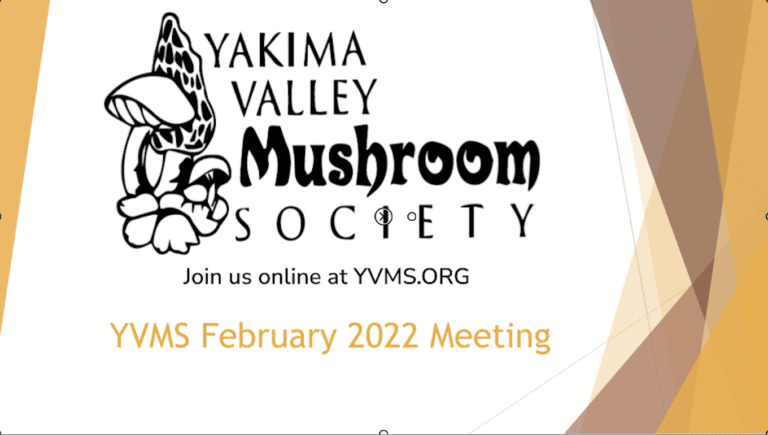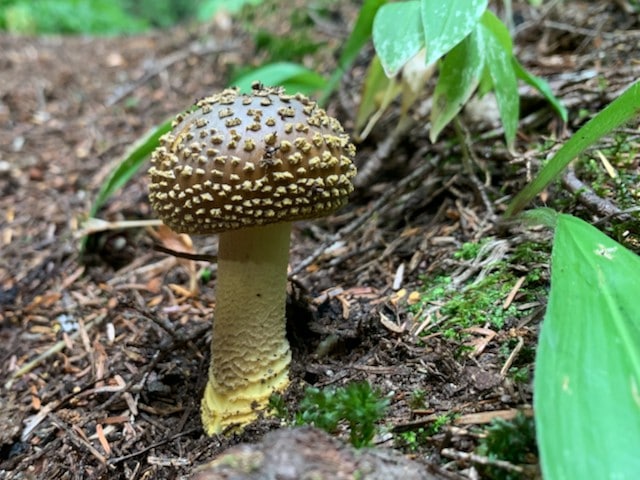Morels and other spring mushrooms
A recording from the Apr 5 Spring Mushrooms talk and a high-res version of the morels species sheet
A recording from the Apr 5 Spring Mushrooms talk and a high-res version of the morels species sheet
Some mushrooms are deadly poisonous. Others can cause serious liver or kidney damage. Some of these can look similar to edible mushrooms. The most seriously poisonous mushrooms are pretty easy to identify. Learn these and don’t eat anything that you can’t tell apart from them. Don’t eat any mushroom without knowing the common lookalikes and…

[et_pb_section fb_built=”1″ admin_label=”section” _builder_version=”3.22″ global_colors_info=”{}”][et_pb_row admin_label=”row” _builder_version=”3.25″ background_size=”initial” background_position=”top_left” background_repeat=”repeat” global_colors_info=”{}”][et_pb_column type=”4_4″ _builder_version=”3.25″ custom_padding=”|||” global_colors_info=”{}” custom_padding__hover=”|||”][et_pb_text _builder_version=”4.14.8″ _module_preset=”default” global_colors_info=”{}”] This is a recording from a presentation for the Yakima Valley Mushroom Society on mycology terms. We only scratch the surface but you may find this useful for learning some new terms or simply some characteristics…...
[et_pb_section fb_built=”1″ _builder_version=”4.9.0″ _module_preset=”default”][et_pb_row _builder_version=”4.9.0″ _module_preset=”default”][et_pb_column type=”4_4″ _builder_version=”4.9.0″ _module_preset=”default”][et_pb_image src=”https://salishmushrooms.com/wp-content/uploads/2021/05/lamb-with-morel-sauce.jpg” title_text=”IMG_4458″ _builder_version=”4.9.0″ _module_preset=”default”][/et_pb_image][et_pb_text _builder_version=”4.9.0″ _module_preset=”default”] Lamb has been making more appearances on my dinner plate this year, so it has been great to experiment with recipes to see what works well. I’ve quickly learned that you don’t need a whole lot to create a tasty…
[et_pb_section fb_built=”1″ _builder_version=”4.9.0″ _module_preset=”default”][et_pb_row _builder_version=”4.9.0″ _module_preset=”default”][et_pb_column type=”4_4″ _builder_version=”4.9.0″ _module_preset=”default”][et_pb_image src=”https://salishmushrooms.com/wp-content/uploads/2021/03/Mushroom-shapes-3-1024×616.jpg” title_text=”Mushroom cap shapes” _builder_version=”4.9.0″ _module_preset=”default”][/et_pb_image][et_pb_text _builder_version=”4.9.0″ _module_preset=”default”] One aspect of mushroom identification is comparing an unknown mushroom to descriptions of a known mushroom. Here are some common cap shapes and representations of these through familiar mushrooms. All mushrooms exhibit a variety of shapes throughout their…...
You must be a Free member to access this content.
Here is a selection of some of my finds from a day in the central cascades on Oct 8...
You must be a Free member to access this content.

[et_pb_section fb_built=”1″ admin_label=”section” _builder_version=”3.22″ global_colors_info=”{}”][et_pb_row admin_label=”row” _builder_version=”3.25″ background_size=”initial” background_position=”top_left” background_repeat=”repeat” global_colors_info=”{}”][et_pb_column type=”4_4″ _builder_version=”3.25″ custom_padding=”|||” global_colors_info=”{}” custom_padding__hover=”|||”][et_pb_text _builder_version=”4.14.2″ _module_preset=”default” global_colors_info=”{}”] Last night I hosted a talk on the iconic Amanita muscaria and some of the other relatively common Amanita species in our region. This is only accessible to Basic and Full members [/et_pb_text][et_pb_button button_url=”@ET-DC@eyJkeW5hbWljIjp0cnVlLCJjb250ZW50IjoicG9zdF9saW5rX3VybF9wYWdlIiwic2V0dGluZ3MiOnsicG9zdF9pZCI6IjExNTY0In19@” button_text=”Amanitas” _builder_version=”4.14.2″…